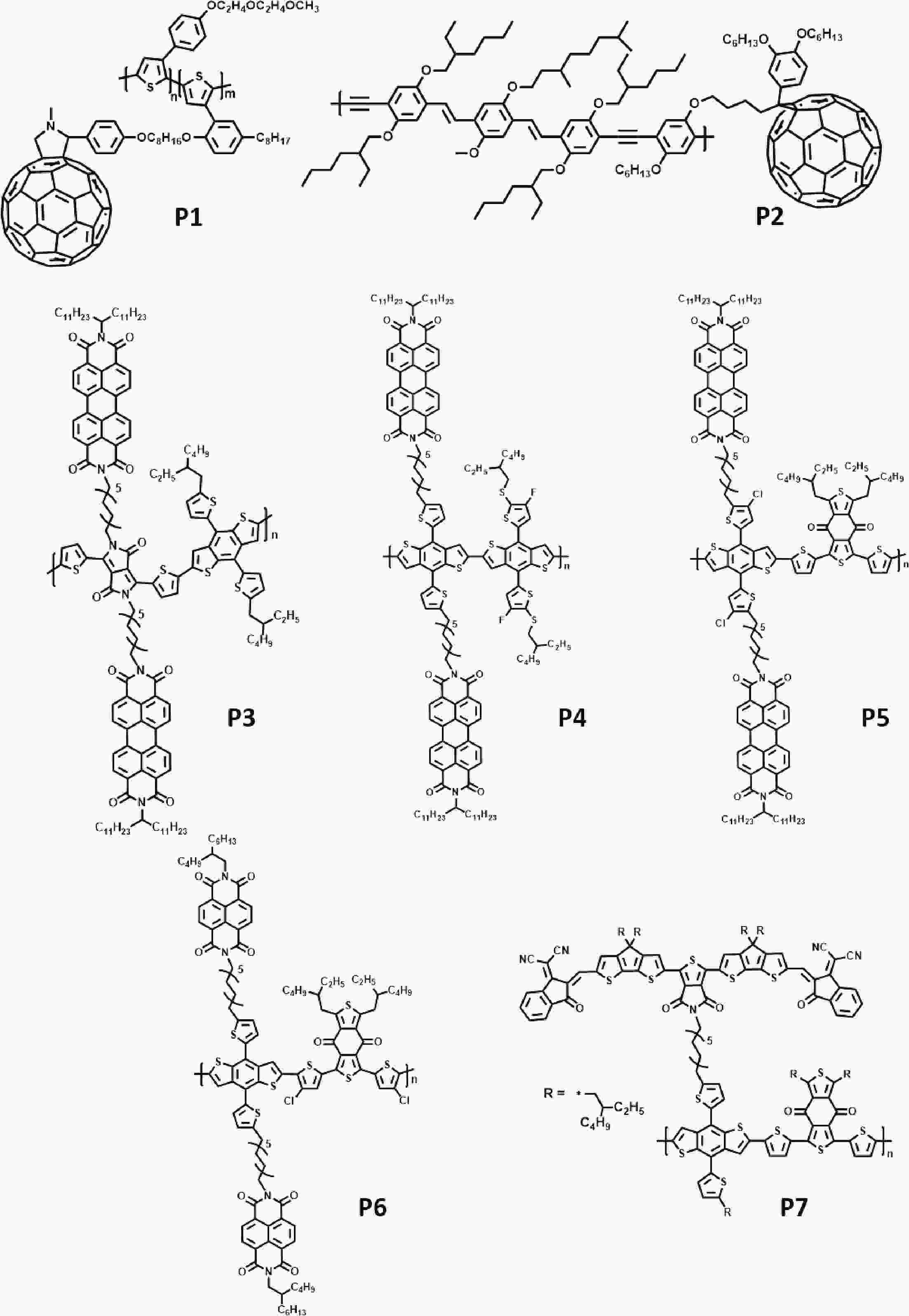| Citation: |
Shijie Liang, Weiwei Li, Liming Ding. Single-component organic solar cells[J]. Journal of Semiconductors, 2023, 44(3): 030201. doi: 10.1088/1674-4926/44/3/030201
S J Liang, W W Li, L M Ding. Single-component organic solar cells[J]. J. Semicond, 2023, 44(3): 030201. doi: 10.1088/1674-4926/44/3/030201
Export: BibTex EndNote
|
-
References
[1] Du X, Li N, Ding L. Solution-processed tandem organic solar cells. J Semicond, 2021, 42, 110201 doi: 10.1088/1674-4926/42/11/110201[2] Wu B, Yin B, Duan C, et al. All-polymer solar cells. J Semicond, 2021, 42, 080301 doi: 10.1088/1674-4926/42/8/080301[3] Ji X, Xiao Z, Sun H, et al. Polymer acceptors for all-polymer solar cells. J Semicond, 2021, 42, 080202 doi: 10.1088/1674-4926/42/8/080202[4] Jin K, Xiao Z, Ding L. D18, an eximious solar polymer!. J Semicond, 2021, 42, 010502 doi: 10.1088/1674-4926/42/1/010502[5] Jin K, Xiao Z, Ding L. 18.69% PCE from organic solar cells. J Semicond, 2021, 42, 060502 doi: 10.1088/1674-4926/42/6/060502[6] Pan W, Han Y, Wang Z, et al. Over 1 cm2 flexible organic solar cells. J Semicond, 2021, 42, 050301 doi: 10.1088/1674-4926/42/5/050301[7] Qin J, Zhang L, Zuo C, et al. A chlorinated copolymer donor demonstrates a 18.13% power conversion efficiency. J Semicond, 2021, 42, 010501 doi: 10.1088/1674-4926/42/1/010501[8] Cao J, Nie G, Zhang L, et al. Star polymer donors. J Semicond, 2022, 43, 070201 doi: 10.1088/1674-4926/43/7/070201[9] Li M, Wang J, Ding L, et al. Large-area organic solar cells. J Semicond, 2022, 43, 060201 doi: 10.1088/1674-4926/43/6/060201[10] Feng E, Han Y, Chang J, et al. 26.75 cm2 organic solar modules demonstrate a certified efficiency of 14.34%. J Semicond, 2022, 43, 100501 doi: 10.1088/1674-4926/43/10/100501[11] Tang Z, Ding L. The voltage loss in organic solar cells. J Semicond, 2023, 44, 010202 doi: 10.1088/1674-4926/44/1/010202[12] Cui Y, Xu Y, Yao H, et al. Single-junction organic photovoltaic cell with 19% efficiency. Adv Mater, 2021, 33, 2102420 doi: 10.1002/adma.202102420[13] Zhu L, Zhang M, Xu J, et al. Single-junction organic solar cells with over 19% efficiency enabled by a refined double-fibril network morphology. Nat Mater, 2022, 21, 656 doi: 10.1038/s41563-022-01244-y[14] Liang S, Jiang X, Xiao C, et al. Double-cable conjugated polymers with pendant rylene diimides for single-component organic solar cells. Acc Chem Res, 2021, 54, 2227 doi: 10.1021/acs.accounts.1c00070[15] Roncali J, Grosu I. The dawn of single material organic solar cells. Adv Sci, 2019, 6, 1801026 doi: 10.1002/advs.201801026[16] He Y, Li N, Brabec C J. Single-component organic solar cells with competitive performance. Org Mater, 2021, 03, 228 doi: 10.1055/s-0041-1727234[17] He Y, Heumüller T, Lai W, et al. Evidencing excellent thermal- and photostability for single-component organic solar cells with inherently built-in microstructure. Adv Energy Mater, 2019, 9, 1900409 doi: 10.1002/aenm.201900409[18] Ramos A M, Rispens M T, van Duren J K J, et al. Photoinduced electron transfer and photovoltaic devices of a conjugated polymer with pendant fullerenes. J Am Chem Soc, 2001, 123, 6714 doi: 10.1021/ja015614y[19] Zhang F, Svensson M, Andersson M R, et al. Soluble polythiophenes with pendant fullerene groups as double cable materials for photodiodes. Adv Mater, 2001, 13, 1871 doi: 10.1002/1521-4095(200112)13:24<1871::AID-ADMA1871>3.0.CO;2-3[20] Tan Z, Hou J, He Y, et al. Synthesis and photovoltaic properties of a donor−acceptor double-cable polythiophene with high content of C60 pendant. Macromolecules, 2007, 40, 1868 doi: 10.1021/ma070052+[21] Miyanishi S, Zhang Y, Hashimoto K, et al. Controlled synthesis of fullerene-attached poly(3-alkylthiophene)-based copolymers for rational morphological design in polymer photovoltaic devices. Macromolecules, 2012, 45, 6424 doi: 10.1021/ma300376m[22] Pierini F, Lanzi M, Nakielski P, et al. Single-material organic solar cells based on electrospun fullerene-grafted polythiophene nanofibers. Macromolecules, 2017, 50, 4972 doi: 10.1021/acs.macromol.7b00857[23] Liu B, Xu Y, Liu F, et al. Double-cable conjugated polymers with fullerene pendant for single-component organic solar cells. Chin J Polym Sci, 2022, 40, 898 doi: 10.1007/s10118-022-2732-2[24] Lai W, Li C, Zhang J, et al. Diketopyrrolopyrrole-based conjugated polymers with perylene bisimide side chains for single-component organic solar cells. Chem Mater, 2017, 29, 7073 doi: 10.1021/acs.chemmater.7b02534[25] Feng G, Li, J, Colberts F J M, et al. "Double-cable" conjugated polymers with linear backbone toward high quantum efficiencies in single-component polymer solar cells. J Am Chem Soc, 2017, 139, 18647 doi: 10.1021/jacs.7b10499[26] Li C, Wu X, Sui X, et al. Crystalline cooperativity of donor and acceptor segments in double-cable conjugated polymers toward efficient single-component organic solar cells. Angew Chem Int Ed, 2019, 58, 15532 doi: 10.1002/anie.201910489[27] Feng G, Li J, He Y, et al. Thermal-driven phase separation of double-cable polymers enables efficient single-component organic solar cells. Joule, 2019, 3, 1765 doi: 10.1016/j.joule.2019.05.008[28] Jiang X, Yang J, Karuthedath S, et al. Miscibility-controlled phase separation in double-cable conjugated polymers for single-component organic solar cells with efficiencies over 8%. Angew Chem Int Ed, 2020, 59, 21683 doi: 10.1002/anie.202009272[29] Liang S, Liu B, Karuthedath S, et al. Double-cable conjugated polymers with pendent near-infrared electron acceptors for single-component organic solar Cells. Angew Chem Int Ed, 2022, 134, e202209316 doi: 10.1002/anie.202209316[30] Cao J, Yi L, Ding L. The origin and evolution of Y6 structure. J Semicond, 2022, 43, 030202 doi: 10.1088/1674-4926/43/3/030202 -
Proportional views






 DownLoad:
DownLoad:














